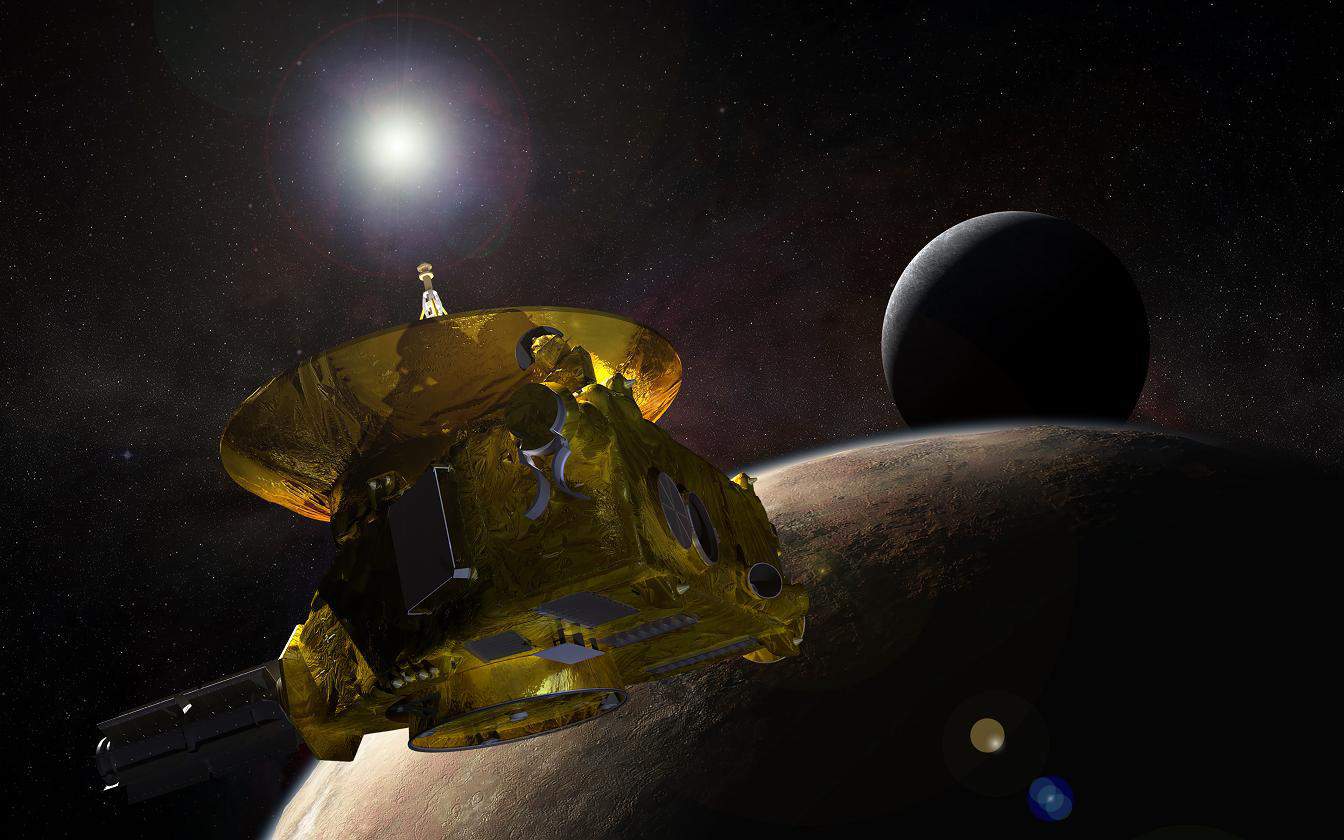One of the furthest reaches of our solar system is just now coming into focus.
NASA’s spacecraft New Horizons is zooming toward Pluto for a flyby that will give mankind the first detailed images of the dwarf planet. It is expected to arrive on Tuesday, July 14.
“We’ll know what it looks like and we’ll know whether it has ice on its surface or not, or whether it has organic material because of solar radiation and cosmic debris hitting, all that stuff,” Sedona local and New Horizons team member Tony Taylor said.
New Horizons will take pictures over the course of less than a day, both as it approaches and then as it hurtles away into the Kuiper belt.
“It goes from being a tiny spot on a camera in less than a day to this massive system that you’re going through and then it shrinks down again,” Taylor said. This gives astronomers only one chance to get the photos, as opposed to maintaining an orbit around Pluto, a more energy-intensive approach.
“That’s where the pressure comes in. We’ve spent all this money — hundreds of millions of dollars to launch and maintain this system — and if we don’t get anything from it, that would be a terrible waste,” he said.
The most recent images delivered as of press time are just now showing the geography of Charon — Pluto’s largest moon — and Pluto, according to a
Space.com report.
The current time to transmit one way to New Horizons or from takes four-and-a-half hours. This delay has caused a tremendous amount of planning since the start of the mission.
Taylor helped launch the project in January 2006. He stayed with the program for a few months until another project, Messenger, through KinetX Aerospace, needed his attention. The company contracts for NASA. The opposite of New Horizons, Messenger recently ended its mission with an intentional crash landing in April on Mercury — one last effort to collect data.
“We were book-ending the solar system,” said Taylor, the navigational lead for that mission.
Now that the New Horizons mission is nearing completion, he has been called back.
Taylor’s work involves plotting the course for New Horizons’ voyage. After the launch, his base in Maryland took control of the craft.
“The trick on all of these spacecraft after launch is you usually do a maneuver 15 to 20 days — maybe as long as a month — after the launch to make a course correction to make up for the errors that happened during the launch,” Taylor said.
Once that maneuver was done, Taylor left the project. Course corrections, other navigators and a “raft of procedures” have kept New Horizons on track.
Taylor has experience navigating deep space. He has been on missions to each planet.
Taylor said that despite worries that arose during the first space exploration missions, passing through the solar system wasn’t as likely to end in a collision with a foreign body as once thought. A primary concern was the asteroid belt that separates Mars from Jupiter. Scientists worried that mass of small objects would be difficult to get through. As it turned out, space is still much a void even in this area, and collisions even between asteroids are a rarity.
“It’s not much of a worry. In fact, a lot of missions that go through there … try to target asteroids that they could fly close by to get pictures and learn from. It’s sort of a game that NASA plays with each spacecraft that goes through the asteroid belt,” Taylor said. “It’s sort of a freebie.”
Uncharted Realms
In order to carry his navigation out, Taylor and his team used the Deep Space Network — three large antennae located in California, Spain and Australia. Their nearly-even positioning around the Earth allows them to always remain in contact with spacecraft with the exception of extremes at the poles. The largest antennae is 70-meters wide. A vast array of supplementary antennae surrounds these.
Signals are sent back and forth between Earth and the spacecraft. The difference in the information sent and received allows scientists to determine where the craft is and its trajectory, creating a Doppler effect.
“We can figure out a lot of things from the Doppler effect,” Taylor said, adding that the rotation of the Earth and timing the signals adds to available information.
A much more technical measurement uses the cosmic standard of quasars. They are used as reference points to further help determine New Horizons’ path due to their distance making them relatively stationary and astronomers’ ability to accurately place them in the universe.
All this information is limited though, in that it is Earth-based information. Photographs are now providing much more firsthand data of the outer reaches of the system. First, New Horizons had to travel a long distance to get there.
To read the full story, see the Friday, June 26, edition of the Sedona Red Rock News.



















